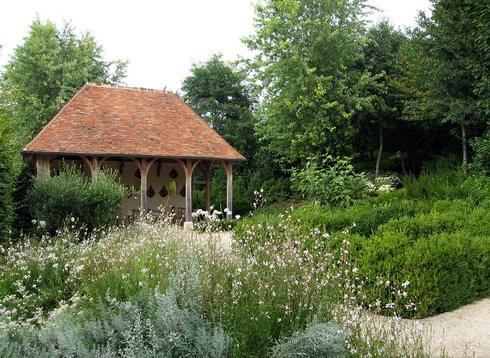|

This "rural" style is defined by affinity to the nature - whether it is an arable land or wood, sea or lake - and usage of simple, natural materials and forms. The structure and colour of main elements of the garden are similar to the materials of which the house is made of, - tree, brick or natural stone, or all of them together, as materials of a surrounding landscape. A considerable quantity of colours of every possible colouring is a special charm of a rural garden. The plants, including flowers are not refined garden forms, but simple, modest - such as daisy, mallow, sweet pea, - grow in blossoming abundance without borders and restrictions. Their combination can be bright, contrast, but it is necessary to strictly determine their place in the garden in a combination with other plant. Mallow is landed at porch near the house or at fence edge. Garden buildings, such as sheds and economic constructions are covered by twisted roses and a sweet pea. The best places in the garden are usually given to vegetable beds, but along the fence there is bright border of flowers typical for a country garden, for example dahlias. Plants in pots can be placed on an old wooden step-ladder. About the equipment - it is better to use not standard garden furniture from shop, but made with your own hands from natural materials: blocks instead of chairs, a table made of frame of a cut tree, etc. Capacities for plants are made of simple clay, pavement of paths is made of plates or brick. On a path strewed by a stone crumb, it is possible to land creeping plants. Even simple zinc watering cans serve not only for watering, but also as decor elements. Guards are made only from boards or a wattle fence. The gate has to look like antique, brick walls and fencings have to be made of old brick, it is also necessary the abundance of lianas (hop, wild grapes) and blossoming bushes.
See also: Colonial Style, Dutch Garden, Modernist Style, Modern Style
|
